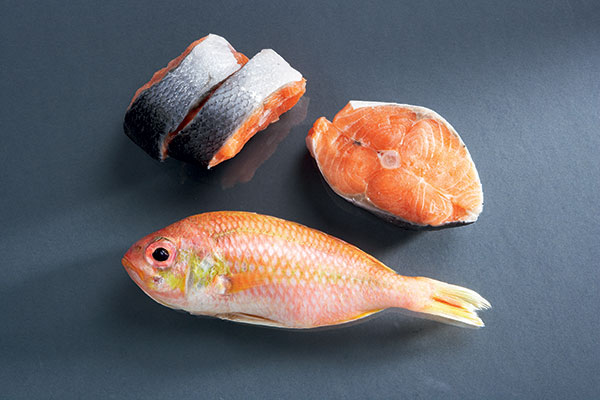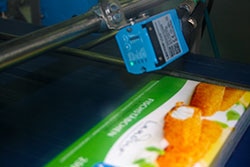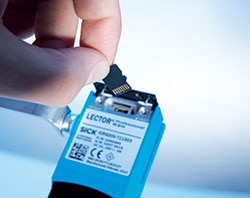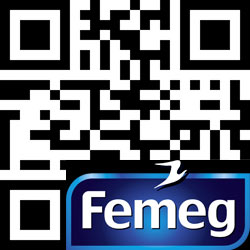Frozen fish specialties are a solid alternative to fresh fish. But where was the fish caught? And how? Femeg, a German producer of frozen fish specialties, has the answer: QR codes on frozen food packaging allow food enthusiasts to access extensive information about the fish theyd like to buy via smart phone. In order to ensure that the QR code is also readable, the Lector620 Professional image-based code reader checks it during the packing process.

Femeg was founded in Bargteheide (near Hamburg) as a family business in 1989 and has steadily grown into one of todays leading specialists for frozen fish and seafood. The name Femeg is synonymous with uncompromising quality and innovative ideas in the area of frozen fish specialties. Femeg specializes in the production of current international fish trends and the classics of fish cuisine - both with top frozen food quality. These delicacies can be found in the product lineups of well-known supermarket chains.
Track and trace via QR code
Since the traceability and sustainability of its different fish species are so important to Femeg, the company also prints QR codes on its packaging in addition to other information. These codes link to the company website, which contains extensive background information on the fish itself, as well as the catching methods used. There, seafood lovers can also find out if steps have been taken to ensure the sustainability of the population of the particular fish or seafood. Femeg also offers product-specific recipes. And all this is available to consumers via smart phone before they reach the checkout counter at the supermarket. Printing all of the information on the labels is a huge step towards greater transparency and a customer-oriented approach, says technical manager Tim Grunewald.
Only perfectly readable QR codes

Femeg has high standards for the process it uses to pack its product. Thats why the company uses the Lector620 Professional image-based code reader to check the QR codes in the packing facility. At this facility, Femegs frozen fish, seafood and ready-made meals are packed in immediate packaging with QR codes. If a code is not readable, the Lector620 transmits an output signal, which causes the packaging to be rejected. This ensures that only perfectly readable QR codes make it to market. The Lector620 Professional receiveshigh marks from Femeg for its simple installation and commissioning. Thanks to the swivel connector, mounting is easy in even the most constricted spaces. Two laser points indicate the exact position of the reading field, making the sensor a cinch to align. With its Auto Setup feature, the Lector620 can be set up automatically to provide reliable QR code recognition. The sensor is also capable of reading 1D and data matrix codes. Femeg uses a sensor with an enclosure rating of IP 65, but the device is also available with an IP 67 enclosure rating. The sensor supports modern fieldbusses directly via the integrated Ethernet interface or through a suitable gateway.
Different packaging types are no problem

The facility handles multiple packaging sizes and different packaging colors, which requires a highly flexible code reader. The Lector620 Professional offers the solution, with multicolored LEDs in either red or blue light. When used together, they produce white light. This allows the sensor to recognize a wide range of different packaging types and QR codes. It is not always possible to hear an acoustic signal during the packing operation, since the process is very loud. However, the green feedback light provides continuous information about whether or not a read operation was successfully completed.
Universal micro SD card

If the code is unreadable, the camera generates no-read images, which can be saved on the micro SD card. This card can also be used universally. Because it can store parameters, the card enables the quick and trouble-free exchange of reader devices. Simply load the card on the new device; after just a few minutes, the new sensor is ready for use and the system stoppage is over.
- Product information: Lector620 Professional image-based code reader
- Product portfolio: Image-based code readers (1D/2D/OCR)


